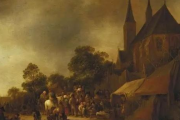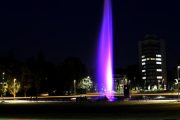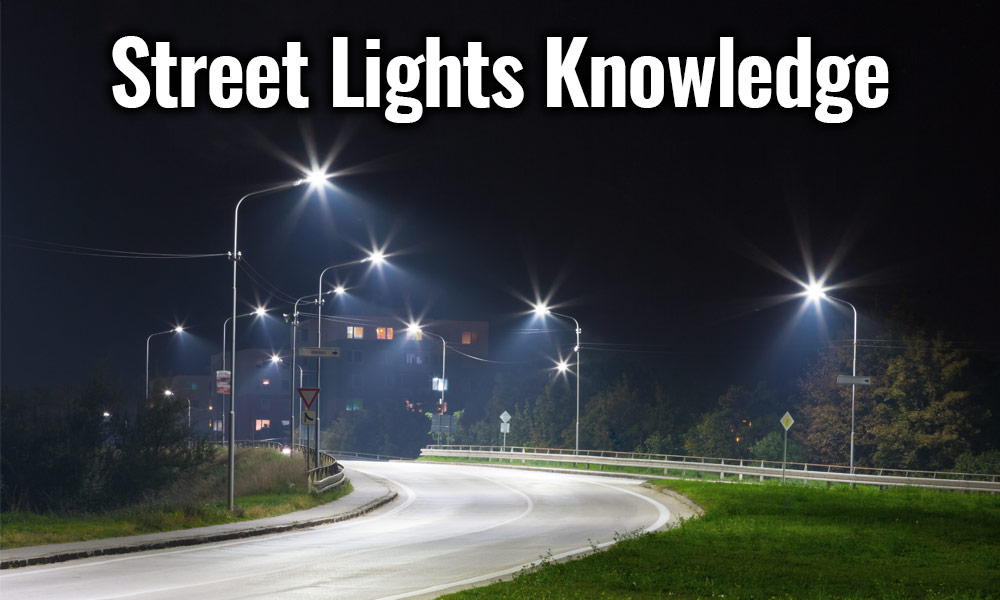
Street lights is that provide lighting functions to roads, and generally refer to lamps within the range of road lighting in traffic lighting. Street lights are widely used in various places where lighting is needed. It consists of lamps, wires, light sources, light poles, light arms, flanges, and embedded parts.
Brief history
 At the beginning of the 16th century, lighting fixtures had to be installed outside the windows facing residential streets in Paris. At fourteen Louis, many street lights appeared on the streets of Paris. In 1667, Louis XIV, known as the “Sun King”, also officially promulgated the Urban Road Lighting Act. Legend has it that it was precisely because of the promulgation of this decree that the rule of Louis XIV was called the “Bright Age” in French history.
At the beginning of the 16th century, lighting fixtures had to be installed outside the windows facing residential streets in Paris. At fourteen Louis, many street lights appeared on the streets of Paris. In 1667, Louis XIV, known as the “Sun King”, also officially promulgated the Urban Road Lighting Act. Legend has it that it was precisely because of the promulgation of this decree that the rule of Louis XIV was called the “Bright Age” in French history.
Street lights involve lighting technology and are suitable for street lights. The purpose is to design a high-efficiency electronic energy-saving street lamp with long life, low power consumption, high power factor, and low current harmonic content. The high-efficiency electronic energy-saving street lamp includes power grid high-voltage leakage branches R1 and C1, rectifier bridges D1-D4, power factor correction branches C2, D5, and D6, high-intermediate frequency glitch filter branches L1, L3, and high-frequency oscillation circuits connected in sequence BG1-BG2, start branch L2, C7 and tube T; save electricity by 80% compared with the previous street lamp; harmonic content THD <25%, extend the life of the tube by 3-4 times.
Urban road lighting design standards
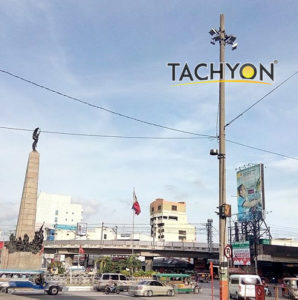
The urban road lighting design standard is a standard promulgated by the state, which is used to regulate the lighting requirements in the construction of urban roads. For details, please refer to “Urban Road Lighting Design Standards”. Within the city, roads provided by vehicles and pedestrians with certain technical conditions and facilities. According to the status of roads in the road network, transportation functions, and service functions of buildings and urban residents along the roads, urban roads are divided into expressways, main roads, secondary roads, branch roads, and residential roads.
Lighting parameter
Luminaire efficiency, the ratio of the total luminous flux emitted by a luminaire to the total luminous flux emitted by all light sources in a luminaire under the same conditions of use. After using the lighting device for a certain period of time, the ratio of the average illuminance or average brightness on a specified surface to the average illuminance or average brightness obtained on the same surface when the device is newly installed under the same conditions. Luminaire mounting height the vertical distance from the light center to the road surface. Luminaire mounting spacing.
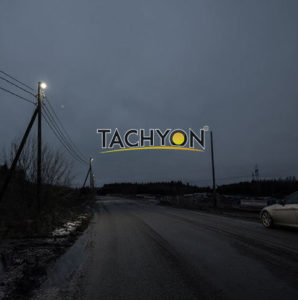
Effective road width. The theoretical width of the pavement used in road lighting design is related to the actual width of the road, the overhang length of the lamps, and the arrangement of the lamps. When the lamps are arranged on one side, the effective road width is the actual road width minus one overhang length. When the lamps are arranged on both sides (including staggered and opposite), the effective road width is the actual road width minus two overhang lengths. When the lamps and lanterns are arranged symmetrically in the middle of the double-strip road, the effective width of the road is the actual width of the road.
Inductive guidance. Proper installation of light poles and lamps along the road can provide drivers with visual information about the forward direction, line shape, and slope of the road, which is called the inductiveness of lighting facilities.
Average road surface brightness. According to the relevant regulations of the International Commission on Illumination (CIE for short), the average value of the brightness of each point measured or calculated at a preset point on the road surface.
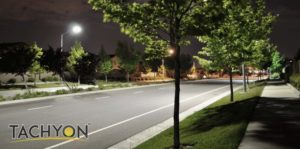 Lamp elevation angle: The street width of the lamp elevation angle and the light distribution curve of the lamp are used to determine the elevation angle of each street. When the lamp head is adjustable, the center line of the light source should fall within the range of L / 3-1 / 2 of the road width. After the lamp body of the long arm lamp (or arm lamp) is installed, the lamp head side should be 100 mm higher than the pole side.
Lamp elevation angle: The street width of the lamp elevation angle and the light distribution curve of the lamp are used to determine the elevation angle of each street. When the lamp head is adjustable, the center line of the light source should fall within the range of L / 3-1 / 2 of the road width. After the lamp body of the long arm lamp (or arm lamp) is installed, the lamp head side should be 100 mm higher than the pole side.
Pavement parameter
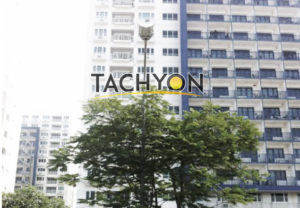 Longitudinal uniformity of road surface luminance. The ratio of the minimum brightness to the maximum brightness on the same lane centerline. Average road surface illuminance. The average value of the illuminance of each point measured or calculated in accordance with the relevant CIE regulations at preset points on the road. Uniformity of road surface illuminance. The ratio of the minimum illumination to the average illumination on the road. maintained average illuminance of road surface It is the average brightness used in the design calculation after taking into account factors such as the attenuation of luminous flux when the light source is planned to be replaced and the decline in efficiency of the lamp due to pollution (ie, maintenance factor) . upward light ratio. When the luminaire is installed in place, the luminous flux emitted by it in the horizontal direction and above accounts for the percentage of the total luminous flux emitted by the luminaire.
Longitudinal uniformity of road surface luminance. The ratio of the minimum brightness to the maximum brightness on the same lane centerline. Average road surface illuminance. The average value of the illuminance of each point measured or calculated in accordance with the relevant CIE regulations at preset points on the road. Uniformity of road surface illuminance. The ratio of the minimum illumination to the average illumination on the road. maintained average illuminance of road surface It is the average brightness used in the design calculation after taking into account factors such as the attenuation of luminous flux when the light source is planned to be replaced and the decline in efficiency of the lamp due to pollution (ie, maintenance factor) . upward light ratio. When the luminaire is installed in place, the luminous flux emitted by it in the horizontal direction and above accounts for the percentage of the total luminous flux emitted by the luminaire.
glare. A visual phenomenon that causes an uncomfortable feeling or reduces the ability to observe an object or detail due to an unsuitable brightness distribution or brightness range in the field of view, or there is an extreme contrast.
surround ratio. The ratio of the average horizontal illuminance in a 5m wide area outside the roadway to the average horizontal illuminance on an adjacent 5m wide roadway.
conflict areas. Refers to areas such as road entrances, intersections, and crosswalks. In this area, between vehicles, lighting power density (of road surface). Lighting installation power per unit of pavement area (including ballast power consumption).
remote terminal unit. The slave station monitored by the master station is a device that performs functions such as remote data collection, processing, sending, receiving, and output execution according to the protocol.
Road classification
1. Urban road
2. Express way
Roads with long distances in the city, heavy traffic and services for fast traffic. Intermediate lanes are set between the opposite lanes of the expressway, and the import and export are controlled in full or in part.
3. Main road
The main roads connecting the main districts of the city adopt the form of separation between motor vehicles and non-motor vehicles, such as three or four roads.
4. Collector road
Combined with the main roads, the roads are formed by the road network to serve as the distribution traffic.
6. Branch road
The connecting road between the secondary road and the residential area road.
7. Residential road
Roads in residential areas and streets mainly for pedestrians and non-motorized vehicles.
Street light height standard
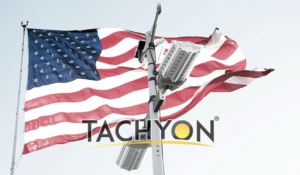 The height determines the field of view, so choosing a good height determines the lighting field of view of the street light.
The height determines the field of view, so choosing a good height determines the lighting field of view of the street light.
- The installation height of the lamps and lanterns must be the same (the height from the center of the light to the ground). Small curved lights One meter lights 5-6 meters Ordinary street long arm lights and chandeliers 6.5-7.5 meters Fast lane arc lights no less than 8 meters Slow lane arc lights No special lights are designed to be lower than 6.5 meters. For installation, the height of the lamp is equivalent to the width of the road to be illuminated. When lighting only on one side H≌L When lighting on both sides H≌L / 2 Wherein, H: Installation height of the lamp (m) L: Road width (m)
1. Conventional lighting
The luminaire is a way to illuminate the light poles, which are usually 15m or less in height, and are arranged on one side, two sides of the road or in the middle of the roadway at a certain interval. When this lighting method is adopted, the longitudinal axis of the lamp is perpendicular to the road axis, so that most of the light emitted by the lamp is directed toward the longitudinal axis of the road.
2. High mast lighting
A group of luminaires is a type of lighting that is mounted on a light pole with a height of 20m or greater for large-area lighting.
3. Semi-height lighting (also called mid-pole lighting)
A group of lamps is mounted on a pole with a height of 15-20m for lighting. When the lamp is configured according to the conventional lighting mode, it belongs to the conventional lighting; when the lamp is configured according to the high pole lighting method, it belongs to the high pole lighting.
4. Cut-off luminaire
The angle between the maximum light intensity direction of the luminaire and the downward vertical axis of the luminaire is between 0 ° and 65 °, and the maximum allowable values of the light intensity in the 90 ° and 80 ° angle directions are 10cd / 1000lm and 30cd / 1000lm, respectively. Regardless of the light flux of the light source, the maximum light intensity in the 90 ° angle direction must not exceed 1000cd.
5. Semi-cut-off luminaire
The angle between the maximum light intensity direction of the luminaire and the downward vertical axis of the luminaire is between 0 ° and 75 °. The maximum allowable values of the light intensity in the 90 ° and 80 ° angle directions are 50cd / 1000lm and 100cd / 1000lm, respectively. Regardless of the light flux of the light source, the maximum light intensity in the 90 ° angle direction must not exceed 1000 cd.
6. Non-cut-off luminaire
The direction of the maximum light intensity of the lamp is not limited, and the maximum value of the light intensity in the 90 °angle direction must not exceed 1000cd.
7. Floodlight
The beam spreading angle (the angle between the two directions where the light intensity is 1/10 of the peak light intensity) is greater than 10 °, and is used as a light projector for flood lighting. Usually rotates and points in any direction.
How many meters is the distance between street lights?
The distance between street lights is determined according to the nature of the road, such as factory roads, rural roads, urban roads, and the power of street lights such as 30W, 60W, 120W, 150W. The width of the road surface and the height of the street light poles determine the distance between street lights, and the distance needs to be determined by the meter. Improper spacing of street lamp poles and too large elevation angles of the lamps are not enough to provide basic lighting functions. At present, the street lamp poles in some cities are either too large or too functional to pursue artistic and taste. Causes flashy road lighting. According to the different conditions of road density, in general, the distance between street lights on urban roads is between 25 meters and 50 meters. If it is a small street lamp such as landscape lights, courtyard lights, etc., the distance is not very bright when the light source is not very bright. It can be shortened a little, and can be spaced about 20 meters apart, depending on customer needs or according to the design.
New street light pole-FRP street light pole
With the development of lighting technology, great changes have taken place in urban outdoor lighting. Seeking new materials and new products has become an inevitable trend. FRP street light poles are mainly made of high-quality glass steel. The strength of glass fiber reinforced plastic is comparable to that of high-grade alloy steel.
Advantages of FRP light pole
Lightweight and high strength: The specific strength of FRP material is equivalent to that of high-grade alloy steel. Its density is 1.5 ~ 2.0, which is 1/4 ~ 1/5 of carbon steel, and the tensile strength is equivalent. Therefore, the same specifications of light poles, the weight of FRP light poles is about 1/3 of steel poles. Based on this feature, FRP light poles are particularly suitable for bridges and other places with load requirements.
1. Corrosion resistance
FRP is a good corrosion-resistant material, and has good resistance to the atmosphere, water, and general concentrations of acids, alkalis, salts, and a variety of oils and solvents. Therefore, the glass fiber reinforced plastic light pole can well adapt to the wet and rainy south and coastal cities with high salt content in the air. There will not be any noticeable changes in the appearance and internals of the light pole throughout its useful life. This is incomparable with ordinary steel rods.
2. Good insulation performance
FRP is a good insulation material and can be used to make insulators. Therefore, the FRP lamp pole will not cause injury due to electric shock due to leakage during use. Although the metal light pole is equipped with a ground protection device, it is unavoidable after all. Therefore, FRP light poles have certain advantages in places with high safety requirements (such as sidewalks and parks).
3. Maintenance-free
Because of its corrosion resistance, glass fiber reinforced plastic light poles need no maintenance throughout the entire life cycle. The surface is made of special spraying materials, which can ensure that there will be no obvious fading in ten years. In the case of relatively scarce street lighting maintenance funds, our advantages are even more prominent.
4. The surface is smooth and beautiful
The surface of the glass fiber reinforced plastic light pole has a good affinity with the outer coating material, so the surface of the light pole after molding is very smooth and more beautiful than ordinary steel poles.
5. Low installation cost
Because of its light weight, glass fiber reinforced plastic light poles do not require cranes during installation, are simple and quick to install, and have little impact on traffic. In street light engineering, labor costs account for about 20% to 30% of the total cost. If glass fiber reinforced plastic light poles are used, this cost can be effectively reduced.
6. Strong wind resistance
FRP material has a slight elasticity. When the typhoon comes, the FRP light pole will produce about 10% amplitude. The principle is similar to that of bamboo.

